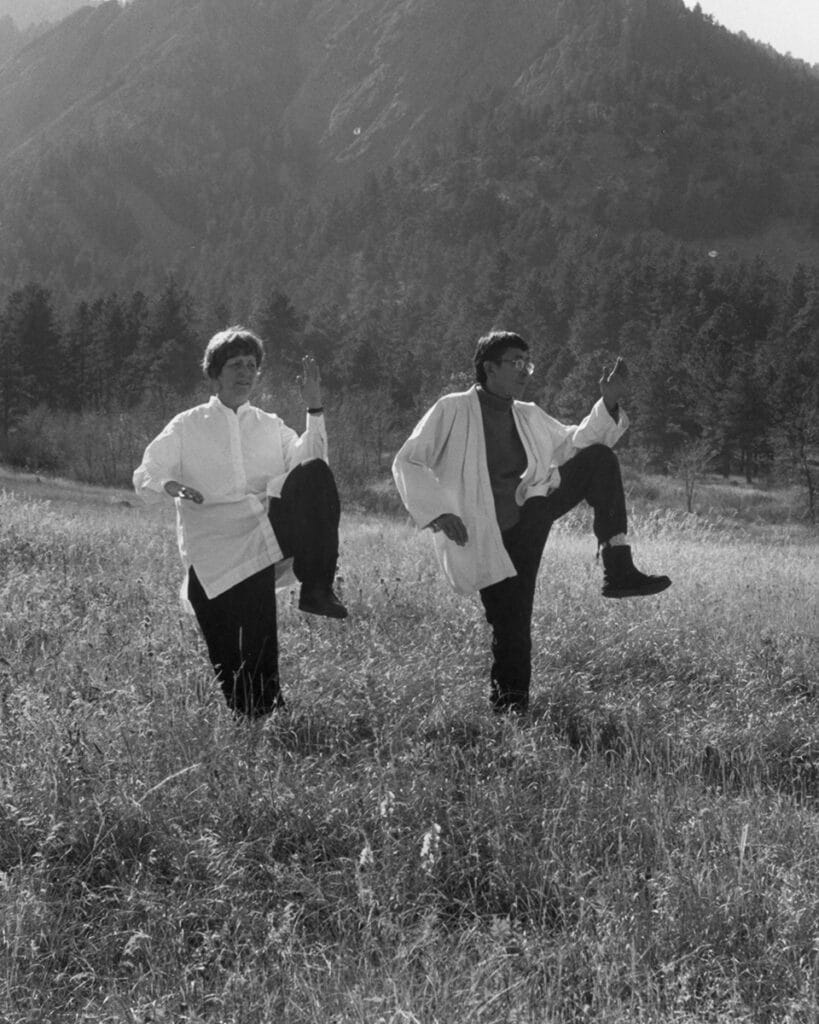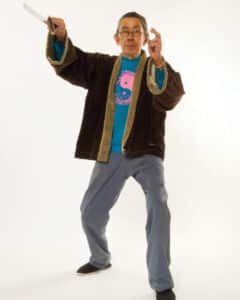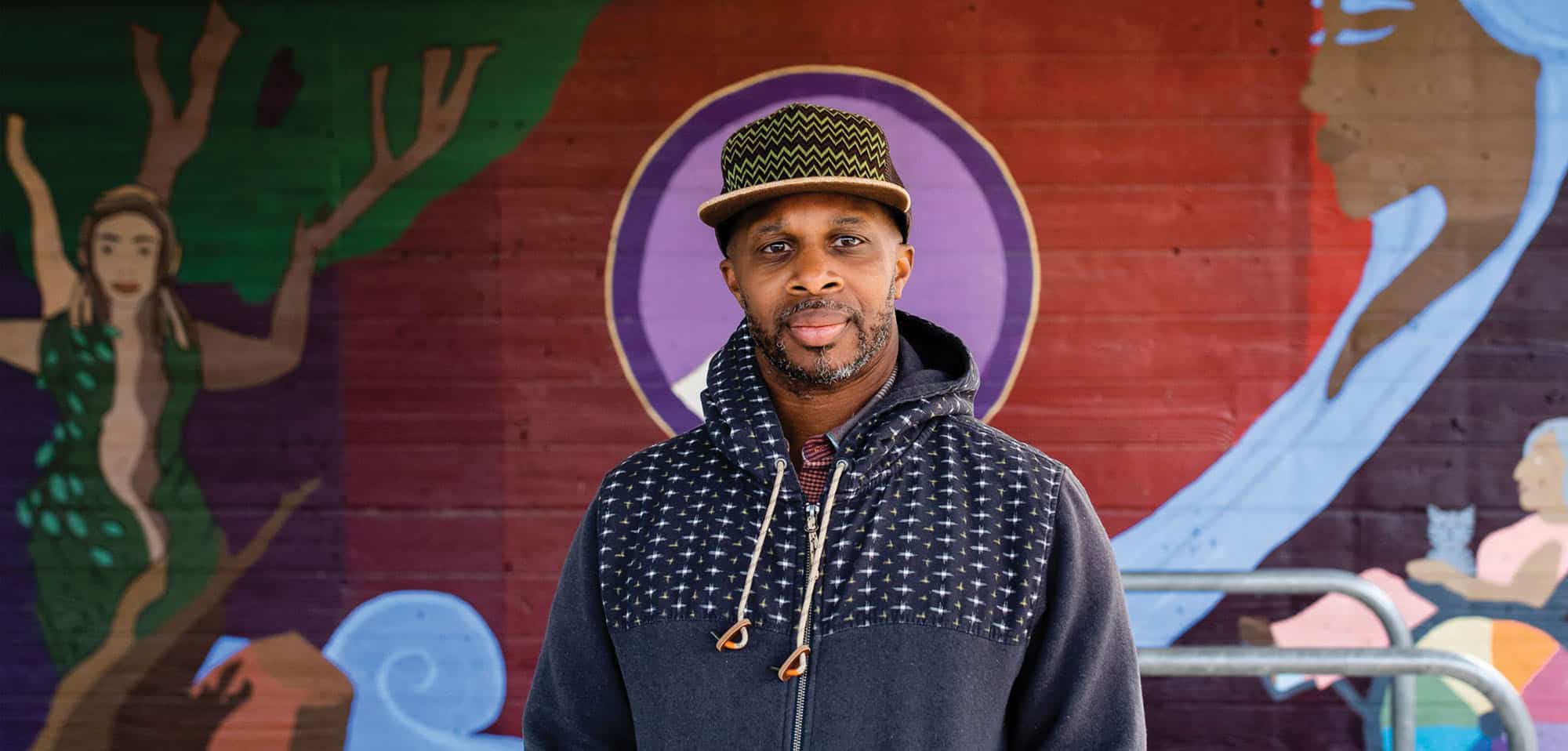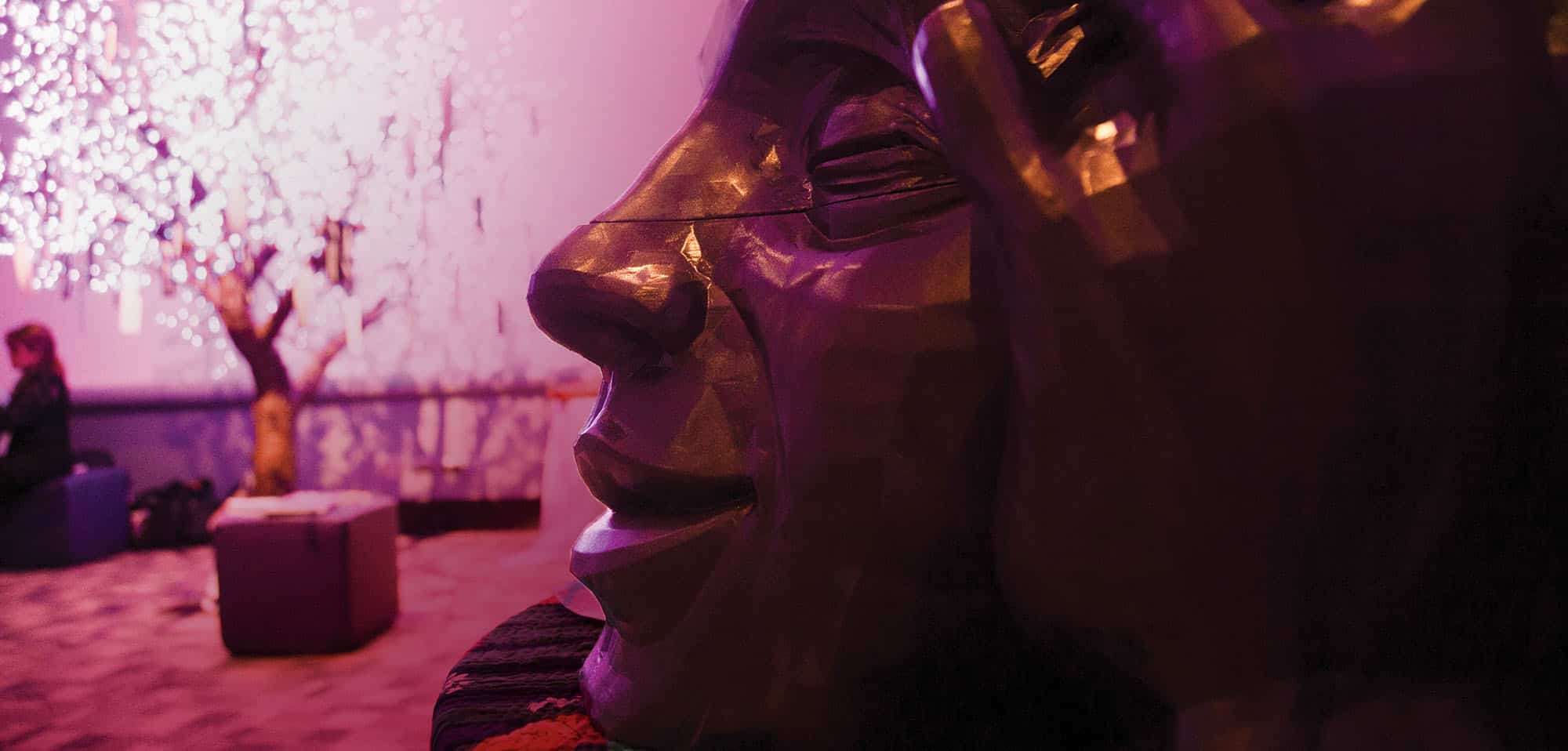So, it is said, with the sage, their life is the working of Heaven, their death the transformation of things. In stillness, the sage and the yin share a single Virtue; in motion, the sage and yang share a single flow. (Zhuangzi ch.15, translated by Burton Watson)
My Taijiquan teachers Jane and Bataan Faigao came from New York City to Naropa University in 1975 to teach Professor Zheng Manqing’s Yang Style Short Form of Taijiquan. Jane and Bataan were the core faculty founders of the Traditional Eastern Arts program established in 1975, which is now a part of the Wisdom Traditions department at Naropa University. The creation of the Traditional Eastern Arts Program was envisioned by Chogyam Trungpa Rinpoche for contemplative arts to be at the heart of education at Naropa. Throughout Naropa’s history, those arts have included: Taijiquan, Yoga, Ikebana, Kyudo, Aikido, Mudra Space Awareness, and Maitri Space Awareness Practice. In essence, these practices brought together the compassionate education of not only the mind, but equally as vital, that of the heart, the body, and the spirit.
The Beginning: A Wellspring of Wisdom Teachings
I met Bataan and Jane in the early fall of 1977 when I began studying Taijiquan with them at Naropa. They completely invited me into their Taiji community and home with great love, friendship, and warmth. It was a magical time. Chogyam Trungpa Rinpoche, the founder of Naropa, was teaching constantly as well as many other Buddhist teachers like Joseph Goldstein and Jack Kornfield who taught at Naropa’s first summer session.

At my first Taiji class, Bataan showed up in his “Count Dracula” costume for Halloween. Bataan was incredibly quiet, gentle, kind, and still, with an occasional joke told—so relaxed. He was the most laidback person I had ever been around. He had a quirky sense of humor. Jane was the opposite in some respects; yes, truly kind, loving, with a great sense of humor, yet she embodied a lot of power and push, like springtime. She was a force of nature with a lot of display! Jane loved to paint and was also a sculptor. In the years before she died, she combined practicing shamatha-vipashyana sitting meditation with her Taijiquan practice.
In those early days, Bataan and Jane were both getting into “Rebirthing,” and everyone was invited to join in at their studio at their home at 16th and Balsam Ave., spending hours breathing intensely on yoga mats, followed by a soak in the hot tub. The breathwork was said to clear birth trauma from the body. Bataan also had a strong connection to writing and poetry at Naropa. He was a published poet and participated in the “Jack Kerouac School of Disembodied Poetics” with readings of his works. He often read his poetry in concert with his musician daughter Wendy Woo at her performances around Colorado. Influential Beat writers such as Allen Ginsberg, William S. Burroughs, and Ken Kesey would be regulars in Jane and Bataan’s living room. Allen Ginsberg studied and practiced Taijiquan with Bataan and Jane and recorded a wonderful video of his demonstration of the Taiji form.
Bataan’s other interest was his work with “Maitri Psychological Services,” which eventually became “Windhorse Community Services.” He and I worked together on several household therapeutic teams. The vision was to bring contemplative practice into everyday life as the ground for working with people experiencing extreme states of mind to recover their intrinsic sanity and basic well-being. We aimed to create an environment of sanity based upon awareness, grounding, and gentleness within a therapeutic team of compassionate attending therapists.
A Brief History of Taijiquan at Naropa
There were the “Big Six” as they were referred to, the first American Taiji students of Professor Zheng in New York City in the mid-1960s. Jane and Bataan were a part of the third group of “18 Taijiquan students” of Professor Zheng. In 1974, Naropa’s first summer institute session, Trungpa Rinpoche invited Professor Zheng to teach Taiji at Naropa, but he could not make the journey due to other commitments. He passed away in Taiwan in 1975. Jane and Bataan invited the 6 senior students of Professor Zheng to come and teach during Naropa Institute’s summer sessions from the late 1970s through the 2000s, including Maggie Newman, Tam Gibbs, Ed Young, Wolfe Lowenthal, as well as Ben Lo, one of Professor Zheng’s highly gifted senior students from Taiwan. The teaching of Taiji was based upon an “oral tradition” and a “hands-on tradition” to convey directly the soft embodied therapy of Taiji. The generosity and love shared by Jane, Bataan, and all of the senior teachers who came out from New York City taught us how to become more fully human, gradually, by softening the armor of our tension. One thousand times a day, they said “relax your body, relax your heart-mind.” They never stopped giving these wisdom teachings. Just as was taught at Professor Zheng’s school in New York City, the Solo Form of Taiji, Push Hands, and Sword Form were taught at Naropa and continue to be taught up to this day.
This idea of giving up hardness to rejuvenate health, to care for others, and to restore wellbeing permeates the practice of Taijiquan.
The Rare Wisdom Teachings They Imparted at Naropa University
Jane and Bataan passed on Professor Zheng’s core teaching of giving up pre-occupation with self and letting go of the fearful ego through the Taiji practice of breathing into the Tan Tien in the lower abdomen, the Sea of Chi, the true home of the heart. They shared with their students that “As you grow more relaxed, you become less afraid. As you become less afraid you grow more relaxed.” This aphorism was passed on to them from Professor Zheng. It is the fundamental measure of progress that gives birth to inner equanimity and kindness for all. Thus, a daily contemplative practice such as Taijiquan can open a person to a “sharp and sudden experience of seeing through the hold that fear has upon the human mind.”[1] This is the cornerstone for helping the world that comes from a daily practice of wakeful relaxation and non-aggression.

Jane and Bataan taught that the main dilemma Professor Zheng saw facing his students in the 1960s was that they needed to learn to love themselves. The path, he said, was to cultivate self-respect and respect for others. Through daily Taiji practice, the journey was to learn to love yourself by letting go of ego’s need for superiority and separateness, the blame game, and to stop using hard force in one’s attitudes and actions towards others. Jane and Bataan embodied the core Taiji teaching that “those people who say you must use force usually have excess strength or practice with a hard style and won’t give it up. They can’t believe that at the limit of suppleness lies a different quality of strength. Such people never obtain the essence of Taiji,” and “a poor student is hard and uses force, but a good one must be supple without force.”[2] They asked their students “What quality of strength comes from embodying suppleness and softness in body, mind, and spirit? It is a wakeful strength and softness, deeply rooted, that protects life and humanity, that serves in the nurturing process of Heaven and Earth so that we can participate in the natural scheme of things rather than destroying it.”
They taught students to replace the wall of habitual hardness with concern for others and to open their hearts by investing in loss. How to properly practice investing in loss through self-cultivation is found in all Taijiquan practices. For example, in push-hand practice a student invests in loss by not resisting being pushed out thousands of times. This idea of giving up hardness to rejuvenate health, to care for others, and to restore wellbeing permeates the practice of Taijiquan. Both Jane and Bataan shared these qualities through their deep embodied relaxation and presence as they led the Taijiquan form in countless classes. They poured this wisdom into their students’ direct, immediate experience through their sensitive touch in Taijiquan sword fencing and through their ability to uproot students in push hands practice sending people flying with a soft but firm touch effortlessly. Steadily, they guided the Traditional Eastern Arts program over many years, assuring that contemplative arts were central to all students’ journeys at Naropa University.
Closing Thoughts
Bataan passed on to us a written archive of Professor Zheng’s unique teachings on Taijiquan through his meticulous notes of Professor’s lectures on Taijiquan, Lao Tzu, and Confucius. He entitled his notes “The Wisdom of Beautiful Whiskers,” which are included in “FullCircle.”[3] This playful name is in recognition of the deep meaning embodied symbolically in Professor Zheng’s long whiskers that carry the wisdom reflected in his commitment to a path of becoming a full human being through the Tao of “Education As Sincerity.”[4]
Bataan and Jane shared with their students that the line between awake and asleep is very thin. They taught rarely through spoken words but through their touch in quietness. They put to rest the armor of aggression, looking deeply under its lid to discover that the nature of human beings resides in goodness and softness, if we dare to look and feel! This was the wisdom imparted to their students through their presence of flowing like water and being steady as a mountain.
Jane Faigao passed away in 2001 and Bataan Faigao died during his sabbatical year in September 2012 on pilgrimage to Wu Dang Shan, a mountain village in China that is considered the spiritual heart of Taijiquan and is central in Taoist history. After having reached the foot of that sacred mountain in the evening, he passed away. As others on the pilgrimage boarded a bus to leave Wu Dang Shan, a sense of solemnity and sadness pervaded the group. However, the atmosphere shifted when they discovered that the bus was filled with Chinese pilgrims singing together, bringing an unexpected sense of upliftment to the moment.
With a deep bow of respect and gratitude to my precious teachers Jane and Bataan Faigao, you have never left my heart!
Author Larry Welsh M.Ac., M.A. is a graduate of Naropa University. He was a Taiji teaching assistant for Jane and Bataan Faigao for many years and now leads Taijiquan studies at Naropa as senior adjunct professor in the lineage of Professor Zheng Manqing’s Taijiquan. As Bataan and Jane said to Larry one day at their home one late summer day long ago in the early 1990s, “Larry, you should go out and teach Taiji.” Larry has practiced and studied East Asian Medicine for the last 30 years as an acupuncturist and Chinese herbalist with a love for the healing power of nutrition.
*Any errors made inadvertently in this writing are purely the responsibility of the author. A sincere effort has been made to be accurate.
References
The Art of War, Sun Tzu, Denma Translation Group, Shambhala Publications Inc., p. XIV
T’ai Chi Ch’uan Ta Wen, Chen Wei-Ming, North Atlantic Books, p. 18
FullCircle, A publication by Bataan Faigao and Jane Faigao, Rocky Mountain T’ai-chi Ch’uan Foundation, Inc.
FullCircle, Volume 1, Number 1, p. 13





